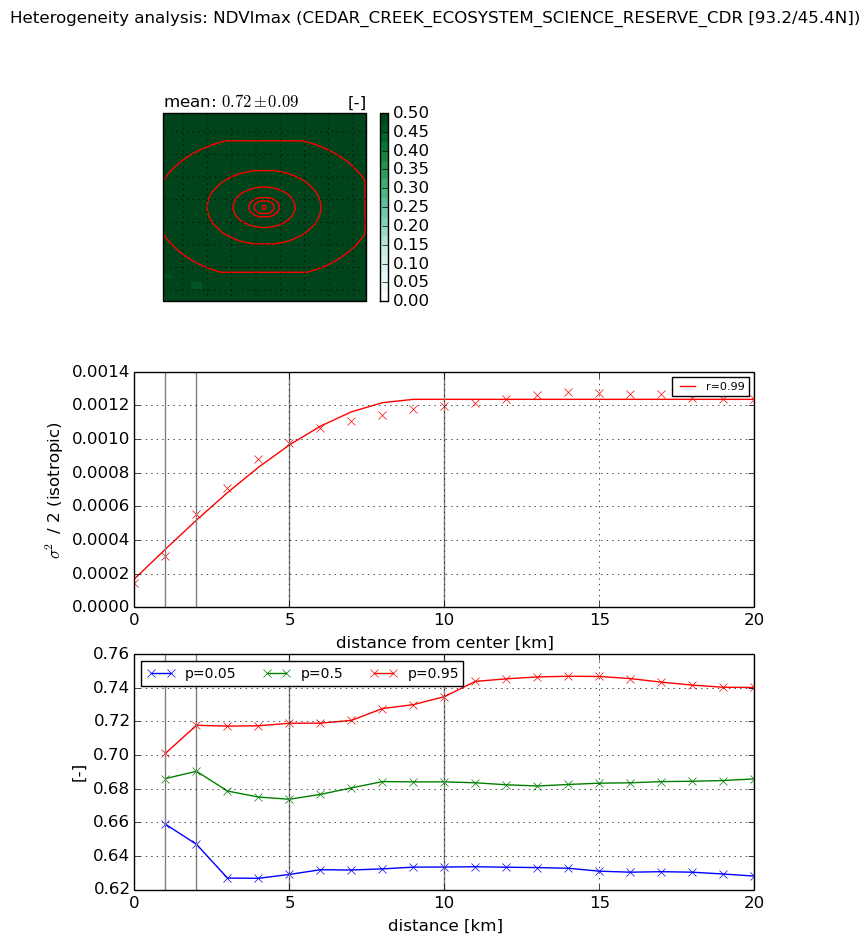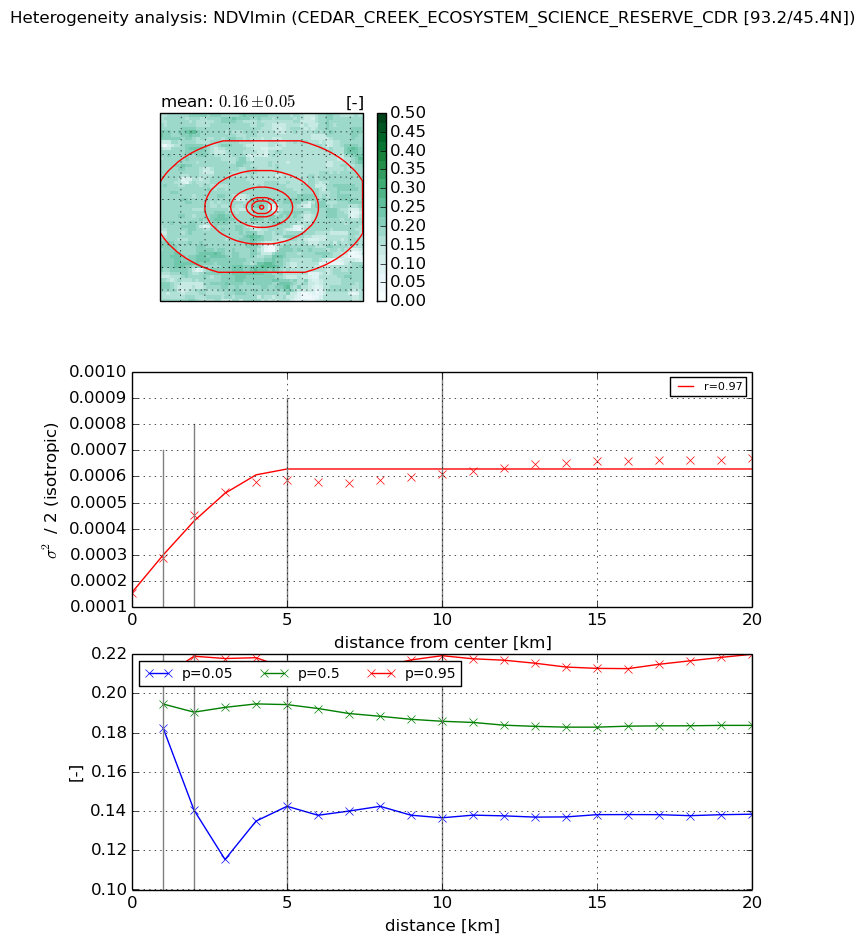CEDAR_CREEK_ECOSYSTEM_SCIENCE_RESERVE_CDR
|
|
|
|
CEDAR_CREEK_ECOSYSTEM_SCIENCE_RESERVE_CDR
|
|
|
lon / lat [deg]: -93.2 / 45.4 Source network: LTER |
|
|
|
|
|
|
|
|
|
|
Distance to open water bodies [km]: |
0.95 |
|
Distance to urban areas [km]: |
1.79 |
|
Radius: 1 km
|
|
Radius: 2 km
|
|
Radius: 5 km
|
|
Radius: 10 km
|
|
Radius: 20 km
|
|
|
|
The heterogeneity analysis provides information about the spatial and temporal heterogeneity of the site.
|
|
|

|
|

|
|

BHR statistics
|
Temporal stability [1/decade]:
|
|
Probabilities that GCOS criteria is met:
|
DHR statistics
|
Temporal stability [1/decade]:
|
|
Probabilities that GCOS criteria is met:
|

BHR statistics
|
Temporal stability [1/decade]:
|
|
Probabilities that GCOS criteria is met:
|
DHR statistics
|
Temporal stability [1/decade]:
|
|
Probabilities that GCOS criteria is met:
|
The variance of the temporal anomalies provides an additional measure about the stability of the signal AFTER removal of the mean seasonal cylce.

